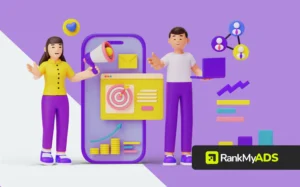Even though it is currently going through a testing phase, the iOS 11 can already be accessed by the public in its Beta version. The operating system will only be officially released at the end of the last quarter of 2017 – but Apple has already disclosed for its users what the main changes will be.
For us, mobile marketing professionals, the company has already made something quite clear: some of the operating system updates will impact App Store Optimization (ASO).
We are here precisely to share those changes with you. In this post, we’ll tell you more details about the new Apple Store and what is going to change in ASO.
The new Apple Store of iOS 11 and the impact on the ASO
Apple is one of the world biggest and that was not by chance. Few companies pay so much attention to user experience. Or invest so much in product improvements which meet your needs. Or try to simply be the best in terms of usability of their products.
Thus, in order to achieve good optimization results in the Apple Store, one has to dance in the rhythm of the multinational. We need to keep a Mobile Marketing strategy of the highest quality and provide the best possible user experience.
Standing out from the competition is extremely important. Below we have outlined some important changes in iOS 11 and how they have a direct impact on good ASO practices.
Layout
Previously, the store layout displayed nine applications (the main one and eight other indications). Now, on iOS 11, only two applications will be displayed on the same screen. In other words, standing out from the competition is now more important than ever before.
Changes in the tabs
Another significant change will take place in the navigation tabs inside the store. New ones have been created, such as the one called Today.
Other, such Categories & Top Charts, will disappear from the menu but will remain accessible nonetheless. In compensation, the Apps and Games categories were added. Apart from this, the Search and Updates will change spots.
New locations for the feature
Before one could only find apps via search results (list) or if the app was featured as an editor’s choice (or collection). Now, in the iOS 11 will have five more new spaces where you can find an app.
- Hero Banner
- Meet the developer
- App or Game of the day
- Within the collection
- Within the list.
Installation
Apple has decided to encourage app installation with some sporadic actions. One of them is to tell the stories of some selected apps, or even promote educational content, like tips.
On top of that, do you recall when we said that apps and games tabs were created to spread some functionalities? Apple will also suggest the installation of apps within those.
Another major change is to provide more customized tips related to human factors than just those based on algorithms. And more: there will be a feature that automatically uninstalls apps which are not used for some time.
Title of the app
Talking specifically about search and conversion, the title is more optimized and has changed from 50 to 30 characters. What is funny is that, after one day, Google announced the reverse movement: increased its the limit of title indexing from 30 to 50 characters.
It is worth remembering that the Apple AppStore has a history of having larger titles (255 characters!), which have been decreasing in size since then. Since this was interface-related, this decrease was carried out to add more dynamic and usability for anyone who uses an iPhone.
But, in technical terms, this is a way for the company to increasingly stimulate the keywords for that app. With this, it increasingly avoids situations in which marketing professionals use keywords that would be inconsistent with the app’s value proposition.
New elements for indexing
Developers and mobile marketing professionals have now two more elements to work with:
- Subtitles: located below the title of the app store and a little above the screenshots – with 30 characters. The subtitles will appear in the organic search ranking of the store.
- Promotional Text: The space located above the description has a limit of 170 characters.
Description
So now the work of optimizing the app descriptions need to be more assertive and strategic. The long description of the Apple AppStore can only be changed during updates, as well as the title and the keywords, for instance. Before, you could change the descriptions, regardless of a new version of the app.
Ratings & Reviews
Every time a version of the app was published in the Apple Store, all ratings were lost. This has been changed. By default, all comments ever made about an app will be displayed to users.
And developers can choose when they want to reset their ratings. Apple has also made it easier for users to review apps. Before, three screens were needed to assess them. Now, only one is required.
We have also prepared a brief summary of the major changes in the app page design:
- Integration with Facebook pages;
- Name of the developer right below the screenshots;
- The space of the App Store Editor is now below the reviews;
- A wider field for reviews;
- The number of videos which can be used in the descriptions of the apps is now three times bigger;
- The Top Chart is also a ranking factor now.
- The icon remains fixed at the top of the page even when the user scrolls the page.
That’s it, guys. These were the key changes. However, some doubts are still hovering in the air. Will the developers have some sort of control over the stories, tips, and lists that will appear in the advanced search field?
For us, mobile marketing professionals, all of these changes mean measurement, analysis, monitoring, and A/B testing to find out more about the true impact on the ASO. This will be a challenge. The good part is that we at RankMyApp love these challenges. Let’s get to work!
What do you think of adding more intelligence to marketing your app? Get a customized analysis of your application and increase 379% more organic plant in 5 months!



